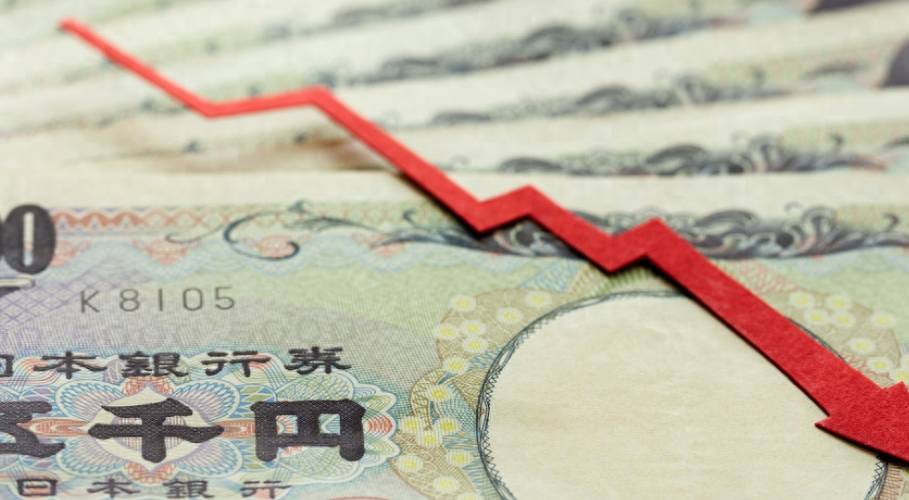Bank of Japan Reduces Bond Purchases, Yen Shorts React Quickly
Advertisements
The Bank of Japan (BoJ) stands at a crucial juncture, with indications that it may pivot its monetary policy during an upcoming meeting next weekThere are serious discussions surrounding a potential reduction in its substantial bond purchase program, which currently amounts to about 6 trillion yen (approximately $38.4 billion) monthlyThe goal is to enhance the predictability of future policy moves, offering clearer guidance to markets that have been eagerly anticipating changes in the economic landscape.
On June 4, Haruhiko Kuroda, the BoJ's governor, emphasized that the central bank's primary stance is to allow market forces to determine long-term interest ratesImportantly, Kuroda hinted at the possibility of a dramatic reduction in the bank’s massive bond purchase program over the short termThis statement was echoed by Ryozo Himino, the BoJ's deputy governor, who highlighted the need for vigilance regarding currency movements in the face of domestic and international economic pressures
Historically, the BoJ has displayed a willingness to adjust its approach; for instance, in May, the bank unexpectedly cut its bond purchases following prior indecision, stirring speculation about its next moves.
Increasingly, the financial markets are responding to this mixture of operations and assertive rhetoric from monetary authorities, creating expectations for further interest rate hikes in Japan this yearAnalysts from Rabobank have suggested that Himino's comments imply a growing likelihood of a "hawkish" decision during the forthcoming BoJ meeting on June 14. The heightened anticipation reflects broader concerns regarding inflationary pressures and a recalibration of monetary policy post the COVID-19 pandemic.
In examining Japan's economic data, insights from Deutsche Bank's chief economist Kentaro Koyama predict that the BoJ will likely increase interest rates twice this year, once in July and again in December, with each hike poised to be 25 basis points
- Bank of Japan Reduces Bond Purchases, Yen Shorts React Quickly
- Apple Soars 7% to Record High; Major Indices Mixed
- Korea's Central Bank Cuts Rates to Tackle Economic Downturn
- Powell Warns Against Rapid Rate Cuts
- BYD Reports Over 10 Billion in Half-Year Profit
Should this prediction hold, Japan’s policy rate could rise to 0.5%, a level not seen in nearly three decadesSuch a move aims to prevent excessively accommodating financial conditions and the further depreciation of the yen as economic recovery progressesNotably, Koyama also foresees a rebound in core inflation by the end of the fourth quarter, driven by accelerating wage growth which could foster a more robust consumer spending environment.
However, recent labor statistics have painted a complex pictureIn April, Japan experienced a 0.7% year-over-year decline in real wages, a substantial decline from March's 2.1%. This dip presents a challenge for the BoJ in its quest for monetary normalization, as wage growth is a critical condition for such a transitionThe bank has consistently emphasized the importance of sustainable wage growth as a precursor to any significant policy adjustments.
In light of these developments, hedge funds that previously favored long positions on the dollar and short positions on the yen are swiftly reassessing their strategies
Since the Federal Reserve began discussing interest rate hikes and entered a quantitative tightening phase in September 2022, the yen has depreciated approximately 43% against the dollarInvestors, reflecting on the BoJ's ambiguous stance on monetary tightening, poured into options betting on the dollar reaching 160 yenHowever, market sentiment appears to be shifting, with hedge funds reducing exposure to such options and gravitating towards bullish bets on the yen.
Ruchir Sharma, the global head of forex options trading at Nomura based in London, noted that the BoJ’s signals have left certain fund managers anxious about potential quantitative tightening, urging them to explore call options on the yenThis sentiment exemplifies the broader nervousness in the market regarding potential shifts in Japan's monetary policy.
Masafumi Yamamoto, a chief forex strategist at Mizuho Securities, acknowledged that while Japan has seen limited success in curbing excessive yen volatility, the potential for action remains if the yen were to dramatically decline within a single trading day

The notion of intervention cannot be dismissed, particularly if the yen were to drop below significant psychological thresholds like 158. However, any such move would likely require broad support from the G7 nations, including the United States.
On a broader scale, the yen finds itself under sustained pressure not only from domestic policy dynamics but also from recent economic data emanating from the United States, which has dimmed the outlook for further dollar strengthWeak economic indicators from the U.Shave reignited conversations around potential rate cuts by the Federal Reserve later this year.
According to the CME Group's FedWatch Tool, traders currently assign a probability of over 70% for a Fed rate cut in September, a notable increase from roughly 60% just a day priorThe derivatives market is already pricing in two rate cuts from the Fed by year's end, showcasing a shift in market sentiment regarding U.S
Leave a Comment